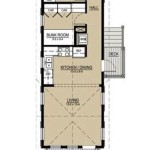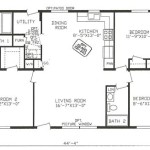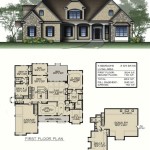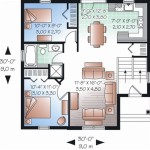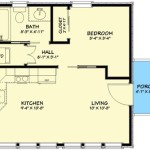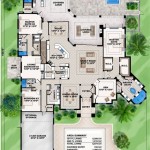House Plans with 4-Car Garages: Space, Functionality, and Design Considerations
The demand for house plans incorporating 4-car garages is increasing, reflecting evolving lifestyles and the growing need for secure storage solutions. These plans cater to a diverse clientele including car enthusiasts, families with multiple vehicles, individuals requiring ample storage space for recreational equipment, and those operating home-based businesses. Understanding the considerations and benefits associated with these designs is crucial for informed decision-making.
A 4-car garage significantly impacts the overall footprint and cost of a house. The garage's strategic placement on the property is paramount. Attaching it to the house offers weather protection and ease of access, while a detached garage might provide greater design flexibility and better noise isolation. Careful consideration must be given to zoning regulations, setback requirements, and the visual impact on the streetscape.
Benefits of a 4-Car Garage
The primary benefit of a 4-car garage is, naturally, the ability to house four vehicles. This eliminates the need for on-street parking or off-site storage, reducing the risk of vehicle damage and theft. This benefit extends to households with multiple drivers or those owning a variety of vehicles, such as a daily commuter, a recreational vehicle, and a classic car.
Beyond vehicle storage, a 4-car garage presents opportunities for additional storage and workspace. One or two bays can be dedicated to vehicles, while the remaining bays can be configured for a workshop, a home gym, or general storage. This adaptability makes a 4-car garage a valuable asset for homeowners with diverse needs.
Furthermore, a well-designed 4-car garage can increase a property's resale value. The added storage and workspace appeal to a wider range of potential buyers, particularly those seeking a functional and versatile home. The perceived value can be further enhanced by incorporating desirable features like finished walls, insulated doors, and advanced lighting.
Design Considerations for 4-Car Garage House Plans
Several critical design considerations influence both the functionality and the aesthetic appeal of a 4-car garage within a house plan. These considerations include garage door placement and style, the interior layout, ventilation, and integration with the overall architectural theme of the house.
Garage door options are diverse, ranging from traditional sectional doors to modern roll-up doors. The choice depends on the desired aesthetic, the available headroom, and the insulation requirements. For a 4-car garage, multiple doors might be preferable to a single large door, as this allows for independent access to each bay and reduces the impact of a single door failure. The style of the doors should complement the overall architecture of the house. For example, a traditional-style house might benefit from carriage-style doors, while a contemporary house might suit sleek, minimalist doors.
The interior layout must be carefully planned to maximize usable space. Considerations include the placement of workbenches, storage shelves, and access doors to the house or backyard. Adequate lighting is essential for both safety and functionality. A combination of overhead lights and task lighting is often the most effective approach. Ventilation is also crucial to prevent the buildup of fumes and moisture. Exhaust fans and strategically placed windows can help to maintain air quality.
Integrating the garage seamlessly into the overall architectural design is essential for curb appeal. The garage should not appear as an afterthought but rather as an integral part of the house. This can be achieved by using similar materials and finishes, incorporating architectural details that mirror those of the house, and landscaping to soften the visual impact of the garage doors.
Practicality and Functionality of 4-Car Garages
The functionality of a 4-car garage extends beyond simply storing vehicles. It also serves as a buffer zone between the exterior and the interior of the house, providing a place to transition from outdoor activities to indoor comfort. Mudrooms, laundry rooms, and even small home offices can be integrated into the garage space, enhancing its versatility.
Climate control is a significant consideration, especially in regions with extreme temperatures. Insulating the garage walls and doors helps to maintain a more stable temperature, protecting vehicles and stored items from damage. Heating and cooling systems can also be installed, although this adds to the overall cost. However, the added comfort and security may be worth the investment.
Security is another key aspect. Robust garage door openers with rolling codes and battery backups provide protection against unauthorized access. Motion-sensor lights and security cameras can deter potential intruders. Integrating the garage with the house's overall security system further enhances protection.
Accessibility is important, particularly for elderly or disabled individuals. Ramps and wider doorways can make it easier to enter and exit the garage. Automatic door openers and motion-sensor lighting can also improve accessibility and convenience.
Planning for the future is also a relevant consideration. As lifestyles change, the needs for space and storage may evolve. A 4-car garage offers the flexibility to adapt to these changes. It can be converted into a workshop, a home office, or even an accessory dwelling unit (ADU), providing additional living space for family members or renters. This adaptability makes a 4-car garage a valuable long-term investment.
In summary, house plans with 4-car garages offer a unique combination of space, functionality, and design possibilities. Careful consideration of the benefits, design elements, practicality, and future potential is essential for maximizing the value and enjoyment of this versatile feature.
The placement of windows in a 4-car garage deserves careful consideration. Natural light can significantly enhance the usability and appeal of the space. Windows should be strategically positioned to provide ample light without compromising privacy or security. High windows or skylights can be effective options, as they allow light to enter while minimizing the risk of break-ins. The size and style of the windows should complement the overall aesthetic of the house.
The floor of a 4-car garage is subject to heavy wear and tear, so choosing a durable and easy-to-clean material is essential. Concrete is a common choice, but it can be susceptible to stains and cracks. Sealing the concrete can help to protect it, but epoxy coatings offer an even more durable and attractive option. Epoxy coatings are resistant to stains, chemicals, and abrasions, and they are available in a wide range of colors and finishes. Other flooring options include rubber tiles and interlocking plastic tiles, which are both durable and comfortable to walk on.
Cost Considerations for 4-Car Garages
The cost of building a house with a 4-car garage is significantly higher than that of a house with a smaller garage. Factors that influence the cost include the size of the garage, the materials used, the complexity of the design, and the labor costs in the area. It is important to obtain multiple quotes from reputable contractors before making a decision.
The cost of the foundation is a major component of the overall cost. A concrete slab foundation is the most common option, but a basement foundation can provide additional storage or living space. The type of foundation will depend on the soil conditions and the overall design of the house.
The cost of the garage doors can also vary widely. Basic metal doors are the least expensive, while custom wood doors are the most expensive. Insulated doors are more expensive than non-insulated doors, but they can save energy and improve comfort.
The cost of electrical wiring and lighting is another factor to consider. A 4-car garage requires ample lighting and electrical outlets for power tools and other equipment. Installing additional circuits may be necessary to handle the increased load.
The cost of heating and cooling the garage can also be significant, especially in regions with extreme temperatures. Insulating the walls and doors can help to reduce energy consumption, but a dedicated heating and cooling system may be necessary to maintain a comfortable temperature year-round.
Legal and Regulatory Aspects of 4-Car Garages
Building a house with a 4-car garage is subject to various legal and regulatory requirements. These requirements may include zoning regulations, building codes, and homeowners association rules. It is important to research these requirements before beginning construction.
Zoning regulations may specify the maximum size and location of the garage. They may also restrict the use of the garage for commercial purposes. Building codes may specify the structural requirements for the garage, including the size and spacing of the framing members. They may also require the installation of fire-resistant materials.
Homeowners association rules may restrict the appearance of the garage, including the color and style of the doors. They may also prohibit the storage of certain items in the garage. It is important to review these rules carefully before beginning construction.
Obtaining the necessary permits is essential before beginning construction. These permits may include a building permit, an electrical permit, and a plumbing permit. Failure to obtain the necessary permits can result in fines and delays.
Compliance with accessibility requirements is also important. The garage should be accessible to people with disabilities. This may require the installation of ramps, wider doorways, and accessible parking spaces.
House plans with 4-car garages represent a substantial investment in space and functionality, offering numerous benefits for homeowners with diverse needs. From accommodating multiple vehicles and providing ample storage to enabling home-based businesses and enhancing property value, the advantages are significant. However, careful planning and consideration are crucial to ensure that the design is both practical and aesthetically pleasing, while also adhering to relevant legal and regulatory requirements. By addressing these aspects comprehensively, homeowners can maximize the value and enjoyment of their 4-car garage.

Storybook House Plan With 4 Car Garage 73343hs Architectural Designs Plans

Craftsman Plan With 3 Beds 4 Car Garage Entertainment Room 1996

Cottage House Plan With 2 Bedrooms And 5 Baths 2197

Plan 51454 4 Car Garage

Plan 2673 5 Bedroom Or 4 Bathrooms With Study Car Garage Diamante Homes Inc

Walkout Basement Craftsmancottage Style House Plan 9734

Plan 23837jd Spacious Mountain House With 4 Car Garage And Work Plans How To Craftsman

Traditional Design With 4 Car Split Load Garage 89893ah Architectural Designs House Plans

46 House Plans With A 4 Car Garage

4 Car Garage With Glass Doors Contemporain Façade Seattle Par Spokane House Plans Inc Houzz

